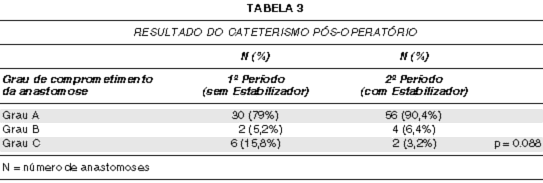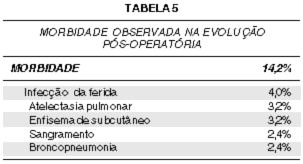Purpose: With the improvements in the hemodynamic treatment of coronary artery lesions, myocardial revascularization using minimally invasive technique is a compelling option. The objective of this study is to report our three-year experience with this technique, evaluating the use of a suture mechanical stabilizer, the access routes and the results obtained. Material and Methods: One hundred and twenty patients were operated on, 86 were male, with ages ranging from 30 to 83 years, mean 61.2 years. All of them had obstructive coronary lesions greater than 80%. Of those with single artery lesions, 79.2% anterior interventricular branch (AIB) lesions, 1.6% had diagonal branch (Dg) lesions and 0.8% right coronary artery (RCA) lesions. Those with associated artery lesions had 17.6% of AIB and Dg lesions and 0.8% of AIB and left marginal circumflex artery (LMg) lesions. Two access routes were used: for single AIB lesions an 8 cm anterior minimal thoracotomy was performed in the fourth left intercostal space. For associated AIB/Dg lesions a 10 to 12 cm median longitudinal incision was used, with total section of the sternum and removal of 5 to 6 cm of the borders. Intravenous beta-blockers and vasodilators were used, and for anastomoses, proximal tourniquets were used in all of the cases, in addition to CO2 to maintain the surgery field bloodless. In the last 82 patients a suture mechanical stabilizer was used for the regional reduction of heart beats. In 22 (18.4%) patients, the left internal mammary artery (LIMA) was elongated using a saphenous vein segment, radial or epigastric arteries. For AIB and Dg revascularization an artificial Y was used from the LIMA with venous or arterial graft. A coronary cineangiography was carried out between postoperative days 1 and 3 in 84 (70%) patients, who were evaluated based on the following findings, according to their anastomosis status: Grade A - no obstruction; Grade B - obstruction > 50%; Grade C - occlusion. This evaluation was performed in 2 different periods: in the first period, without a suture stabilizer and in the second period with a stabilizer. Results: Coronary cineangiography showed the following anastomosis status: in the first period (38 anastomosis), Grade A - 79%, Grade B - 5.2% and Grade C - 15.8%. In the second period (62 anastomosis), Grade A - 90.4%, Grade B - 6.4% and Grade C - 3.2%. The thoracic or mediastinal drains were removed in up to 33.1 h, mean 22.4 hs. There were 6.4% of reoperations, of which 3.2% were related to anastomosis, 2.4% of early and 0.8% reoperations and 3.2 were not related to anastomosis, 2.4% early and 0.8% late reoperations. In 99.2% of the cases there were no ischemic complications in the early postoperative and 118 (98.4%) were discharged. Of these patients, 115 (95.8%) were discharged after 2 to 9 days, mean 4.6 ± 1.8 days and 3 (2.4%) patients had prolonged hospitalization periods due to pulmonary infection. Overall morbidity was 14.2% of which 4.0% was wound infection; 3.2% pulmonary atelectasia; 3.2% subcutaneous emphysema; 2.4% bleeding and 2.4% bronchopneumonia. Conclusions: Minimally invasive coronary artery bypass graft has shown to be a good alternative for some groups of patients. It showed better esthetics and faster postoperative recovery. The anastomosis results were better when a suture mechanical stabilizer was used.
Myocardial revascularization; Surgical procedures; Arterial occlusive diseases; Coronary vessels





